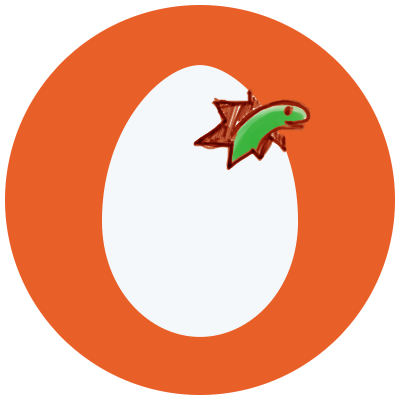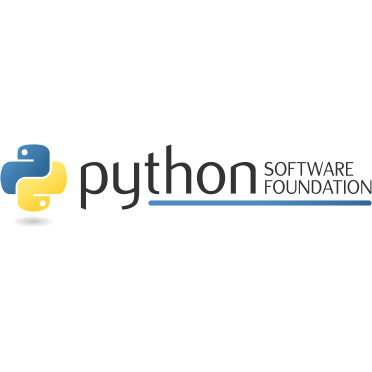Python 2 to 3
How to Upgrade and What Features to Start Using
Python 2 End of Life
January 1, 2020
1 year, 7 months, 19 days
Syntax improvements
>>> many_numbers = range(1_000_000, 10_000_000)
>>> first, *middle, last = many_numbers[:10_000]
>>> new_numbers = [last, *middle, first]
>>> print(*middle[:4], sep=', ', end='!\n')
1000001, 1000002, 1000003, 1000004!
>>> print(f"{first:,}, {last:,}, and {len(middle)} more")
1,000,000, 1,009,999, and 9998 more
>>> 5 / 2
2.5
class LatLong:
def __init__(self, lat, long):
self.lat, self.long = lat, long
def __eq__(self, other):
if isinstance(other, LatLong):
return (self.lat, self.long) == (other.lat, other.long)
return NotImplemented
def __ne__(self, other):
return not self.__eq__(other)
def __repr__(self):
return "{class_name}(lat={lat}, long={long})".format(
class_name=type(self),
lat=self.lat,
long=self.long,
)
>>> location = LatLong(32.5395, -117.0440)
>>> location
LatLong(lat=32.5395, long=-117.0440)
>>> location2 = LatLong(lat=32.5395, long=-117.0440)
>>> location == location2
True
class LatLong:
def __init__(self, lat, long):
self.lat, self.long = lat, long
def __eq__(self, other):
if isinstance(other, LatLong):
return (self.lat, self.long) == (other.lat, other.long)
return NotImplemented
def __repr__(self):
return "{class_name}(lat={lat}, long={long})".format(
class_name=type(self),
lat=self.lat,
long=self.long,
)
>>> location = LatLong(32.5395, -117.0440)
>>> location
LatLong(lat=32.5395, long=-117.0440)
>>> location2 = LatLong(lat=32.5395, long=-117.0440)
>>> location == location2
True
class LatLong:
def __init__(self, lat, long):
self.lat, self.long = lat, long
def __eq__(self, other):
if isinstance(other, LatLong):
return (self.lat, self.long) == (other.lat, other.long)
return NotImplemented
def __repr__(self):
return f"{type(self)}(lat={self.lat}, long={self.long})"
>>> location = LatLong(32.5395, -117.0440)
>>> location
LatLong(lat=32.5395, long=-117.0440)
>>> location2 = LatLong(lat=32.5395, long=-117.0440)
>>> location == location2
True
class LatLong:
def __init__(self, lat, long):
self.lat, self.long = lat, long
def __eq__(self, other):
if isinstance(other, LatLong):
return (self.lat, self.long) == (other.lat, other.long)
return NotImplemented
def __repr__(self):
return f"{type(self)}(lat={self.lat}, long={self.long})"
from dataclasses import dataclass
@dataclass
class LatLong:
lat: float
long: float
from collections import UserDict
from functools import total_ordering
@total_ordering
class ComparableDict(UserDict):
"""Implement less than and greater than on dictionary."""
def __lt__(self, other):
if isinstance(other, ComparableDict):
return sorted(self.items()) < sorted(other.items())
return super().__lt__(other)
Python 3
Brought to you by the makers of Python 2
Approaches to Upgrading
- Gradual: add support for 3, drop 2 eventually
- Sudden: upgrade code to 3 and drop 2 immediately
- Extreme: rewrite the entire code base in Python 3
Sudden vs Gradual
- Sudden migrations are great for stagnant projects
- Gradual migrations are best if you need to keep shipping
- We'll discuss gradual upgrades first
Gradual Migration Strategy
Gradual Migration Strategy
- Have a very good testing process in place
- Drop support for older versions (move to Python 2.7)
- Write "straddling code" in the "common subset" of 2/3
- Opt-in to back-ported Python 3 features
- Remove uses of deprecated libraries and syntax
- Rely on your tests to get your code working again
- Start running your code on Python 3 in production
- Drop Python 2 compatibility code and clean up your code
from urllib2 import urlopen
response = urlopen('http://pseudorandom.name')
name = response.read().rstrip()
print " ".join(name)
from __future__ import print_function
try:
from urllib.request import urlopen
except ImportError:
from urllib2 import urlopen
response = urlopen('http://pseudorandom.name')
name = response.read().decode('utf-8').rstrip()
print(" ".join(name))
Migrating isn't easy
But there is help
Compatibility Libraries
six
future
Automated Conversion
modernize
futurize
Compatibility libraries
try:
from urllib.request import urlopen # Python 3
except ImportError:
from urllib2 import urlopen # Python 2
from six.moves.urllib.request import urlopen # six
from future.moves.urllib.request import urlopen # future
from future.standard_library import install_aliases
install_aliases()
from urllib.request import urlopen
The future library encourages Python 3 idioms
Automated code conversion tools
- These tools transform code to a common 2/3 subset
modernizerelies on thesixcompatibility libraryfuturizerelies on on thefuturelibrary2to3is for sudden upgrades (support 3, drop 2)
class Circle(object):
def __init__(self, radius=1):
self.radius = radius
def __nonzero__(self):
return self.radius != 0
for n in range(3):
circle = Circle(n)
truthiness = "truthy" if circle else "falsey"
print "Circle with radius", circle.radius, "is", truthiness
from __future__ import print_function
from builtins import range
from builtins import object
class Circle(object):
def __init__(self, radius=1):
self.radius = radius
def __bool__(self):
return self.radius != 0
for n in range(3):
circle = Circle(n)
truthiness = "truthy" if circle else "falsey"
print("Circle with radius", circle.radius, "is", truthiness)
You'll still need to fix things manually
import csv
from urllib2 import urlopen
from StringIO import StringIO
def save_tabbed_data_as_csv(url, filename):
response = StringIO(urlopen(url).read())
reader = csv.reader(response, delimiter='\t')
csv_file = open(filename, mode='wb')
csv.writer(csv_file).writerows(reader)
from future import standard_library
standard_library.install_aliases()
import csv
from urllib.request import urlopen
from io import StringIO
def save_tabbed_data_as_csv(url, filename):
response = StringIO(urlopen(url).read())
reader = csv.reader(response, delimiter='\t')
csv_file = open(filename, mode='wb')
csv.writer(csv_file).writerows(reader)
from future import standard_library
standard_library.install_aliases()
import csv
from urllib.request import urlopen
from io import StringIO, open
def save_tabbed_data_as_csv(url, filename):
response = StringIO(urlopen(url).read().decode('utf-8'))
reader = csv.reader(response, delimiter='\t')
csv_file = open(filename, mode='wt', newline='')
csv.writer(csv_file).writerows(reader)
The automated conversion tools won't solve all your problems
You'll still need to fix code manually
The Unicode Situation
- Python 3.0 uses
strfor text andbytesfor bytes - Python 2.0 uses
strfor both bytes and text - The automated tools try to guess (often incorrectly) which strings should be text and which should be bytes
- Embrace the "unicode sandwich" from Pragmatic Unicode
Useful Resources
What about sudden migrations?
- Fork your Python 2 version and don't change it anymore
- You could use
2to3(I've never used it, good luck!) - You still need to manually fix all the same things (like unicode/bytes issues and division issues)
- You still need a solid testing process
Good Luck!
Need help getting your team up to speed on Python?
Trey Hunner
Python & Django Team Trainer
Contact me: trey@truthful.technology

